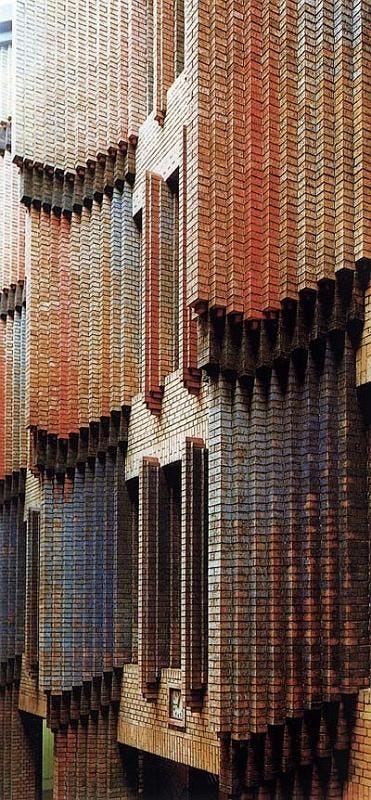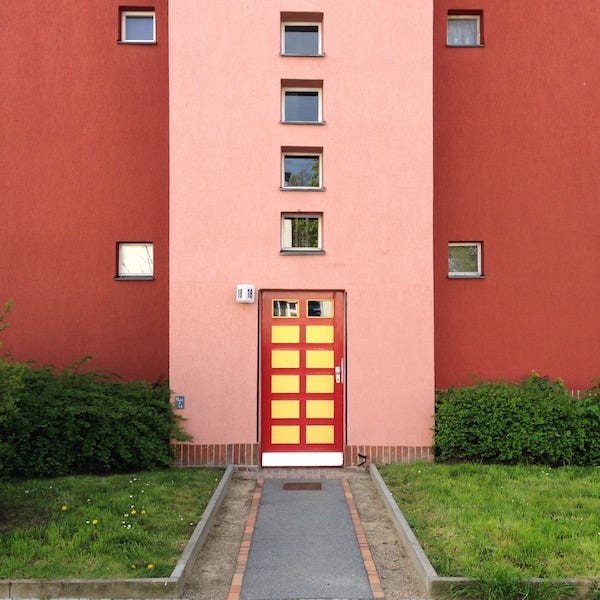Architectural Movements of Yesteryear 6: Deutscher Werkbund
Deutscher Werkbund was not a typical architectural and artistic movement. It was a trade organization with the goal of advancing industrial trades in art and architecture. It was started in 1907 by Joseph Maria Olbrich who was a well-known architect in the Vienna Secession. There were over one hundred architects, artists, and politicians (mostly from the German Socialist party, not to be confused with the National Socialist Party since they were disbanded before Hitler took power. Allegedly, Hitler started the National Socialist Party upon rejection from the German Socialist Party, though they were both considered far-right groups). Many architects that I have spoken about and many architects that I will talk about in the future were included in this organization and that is the main reason I think Werkbund is worth talking about. It’s clear that this group is where ideas were shared and innovations were made.
A list of architects that I will talk about in other articles include:
Walter Gropius (the Bauhaus was effectively spun off from the Werkbund)
Erich Mendelsohn (International Style)
Ludwig Mies van der Rohe (International Style)
Otto Wagner (Vienna Secession)
Joseph Maria Olbrich (Vienna Secession)
Josef Hoffmann (Vienna Secession and designer of the incredibly innovative Palais Stoclet which functions as one of the only the evolutionary link between Art Nouveau, Vienna Secession, and Modernism)
Henry van de Velde (Art Nouveau)
Each of these architects are fit with the “New Objectivity” label, but that is far too broad an umbrella to be of any real use. There are architects that fit under “New Objectivity” or “Deutscher Werkbund”, but don’t really fit with any of these other styles including Peter Behrens and Bruno Taut.
Peter Behrens
Peter Behrens, like Louis Sullivan, by virtue of mentoring up-and-coming architects is one of the most influential architects in architecture history. The biggest modern European architects all worked for him at one point or another including Mies van der Rohe, Corbusier, and Walter Gropius.
Interested in how new industrial materials could be used to innovate in architectural design, many of his buildings. His designs range from Revivalism, Art Nouveau, and Industrial Modernism.
All of the following pictures of Hoescht AG building were found here by 88 floors no elevator.
Hoescht AG
The Hoescht AG Building employs bricks with deep pigmentations. Without a specific aesthetic typology, this building is elegant and unique. I can’t think of another building that looks remotely similar.
AEG Turbine Factory
The AEG Turbine Factory has one of the most boring exteriors I’ve ever seen, but at the time using this amount of glass in a factory was not common. The massive corners clearly show this building has the quality of “Firmitas (strong)” and “Utilitas (function)” two of Vitruvius pillars of architecture. The floating glass barrel vault executes the final Vitruvius pillar “Venustas (beauty)” which fits with Behrens reverence for classical architecture.
German Embassy in St. Petersburg
As with nearly all German architects, Peter Behrens had run ins with the Nazi party. Unlike many of Peter Behren’s mentees, Behrens was venerated by Albert Speer and Adolf Hitler who admired his design for the German Embassy in St. Petersburg.
Bruno Taut
Taut would have been considered a typical modernist architect except for one major difference. As a painter he was OBSESSED with color. He experimented with color so extensively that other architects mocked him as “colorblind”.
Glass Pavilion
His most famous design is the Glass Pavilion, which made a splash as a temporary installation to show off the industrial utility of glass. Unfortunately, all we have are black and white photographs, but if we take the rest of his work as any indication it was beautifully ornate and wonderfully colorful.
Bruno Taut’s goal in architecture was to create and mold experiences to be as impactful and meaningful as possible. This closely mirrors my own phenomenological tendencies. I am taking Wikipedia’s word for this (at least it’s cited but I haven’t read the source), but the frieze was a poem written by the Anarcho-Socialist poet Paul Scheerbart who had an vission of a glass future.
Homes in Berlin
The following photographs of homes in Berlin designed by Taut were found here
I simply wanted to use these as an indication of the types of colors that Taut used in all of his architecture.
Recognizing Deutscher Werkbund is important in setting the groundwork for later movements like the Bauhaus and the International style and how it grew from the Vienna Secession and Art Nouveau, though I wish some of the architects (like Bruno Taut) that are mostly forgotten about were brought along for the ride. Unfortunately, the experiments with color did not commence until Post-Modernism and we all know how that turned out.
















